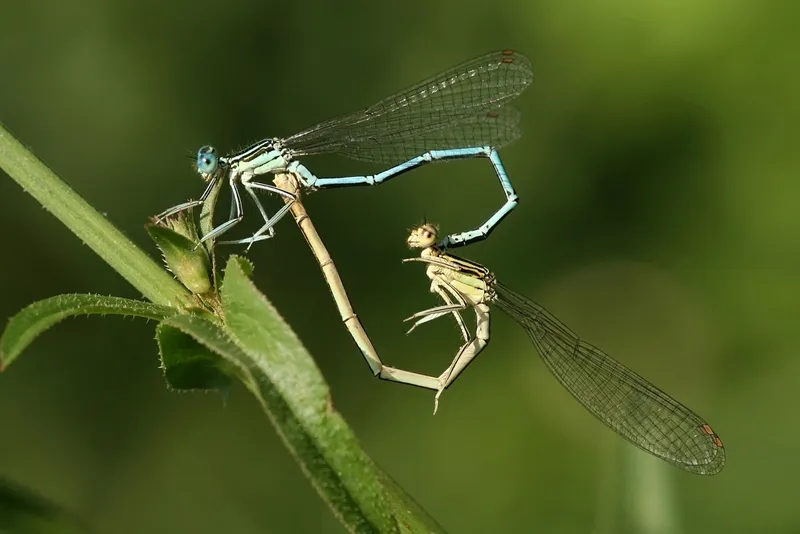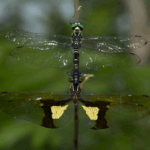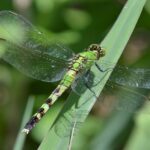The Dragonfly Mating Game – A Contact Sport
Romance and courting have no place in the dragonfly mating ritual. In fact, it is a bit violent and somewhat unsettling. However, dragonflies must be doing something right, as they have existed for over 300 million years.
Dragonfly sex is a rough-and-tumble affair. If you’ve ever seen a pair of mating dragonflies in the act, you know that their sexual coupling requires the flexibility and acrobatic skill of a “Cirque de Soleil” performer. Females get bitten, males get scratched, and sperm winds up everywhere. These strange mating habits have survived millions of years of evolution, so the dragonflies must know what they’re doing, right? Let’s take a closer look at how dragonflies mate.
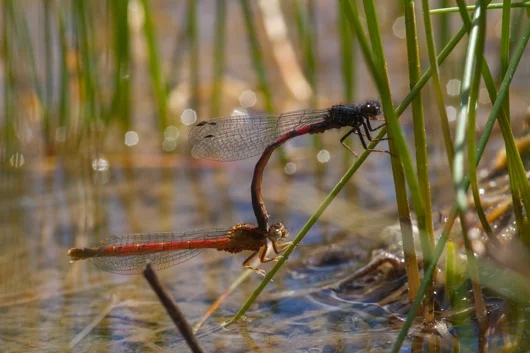
FINDING AN APPROPRIATE MATE
Using their extraordinary eyesight, a male dragonfly must identify a female of his own species. In a pond habitat that is home to many dragonfly and damselfly species, this may seem like a daunting task. However, male dragonflies are up to the challenge. They are able to target an appropriate breeding partner by observing the flight style, color, pattern and size of a female dragonfly.
MATING MECHANICS
The first step in the mating process is for the male dragonfly to subdue the female. The typical scenario looks like this. While in flight, the male approaches the female from behind, grabs hold of her thorax with his legs, and sometimes bites her in an effort to quickly subdue her. Pulling his abdomen forward, he uses his anal appendages (cerci) to hold her by the neck while continuing to fly with her in a formation referred to as tandem linkage.
The male dragonfly prepares for sex by transferring his sperm to his penis. Now comes the issue of joining the male’s penis (located at the tip of his abdominal segment) to the female’s genital opening (located near her neck). Once their sex organs are linked, the dragonfly couple forms a closed circle with their bodies.
How Dragonfly Males Find Receptive Females
Dragonflies don’t engage in elaborate courtship rituals. In a few dragonfly families, the male might display his colors or fly over his territory to show a potential mate what a good oviposition site he’s chosen for their offspring, but that’s about it.
Since dragonflies have extraordinarily good vision, the males rely mostly on their eyesight to find appropriate female partners. A typical pond or lake habitat will support many species of dragonflies and damselflies. To succeed in passing on his DNA, a male dragonfly must be able to distinguish females of his own species from all the other Odonates flying around. He can recognize a conspecific female by observing her flight style, her colors and patterns, and her size.
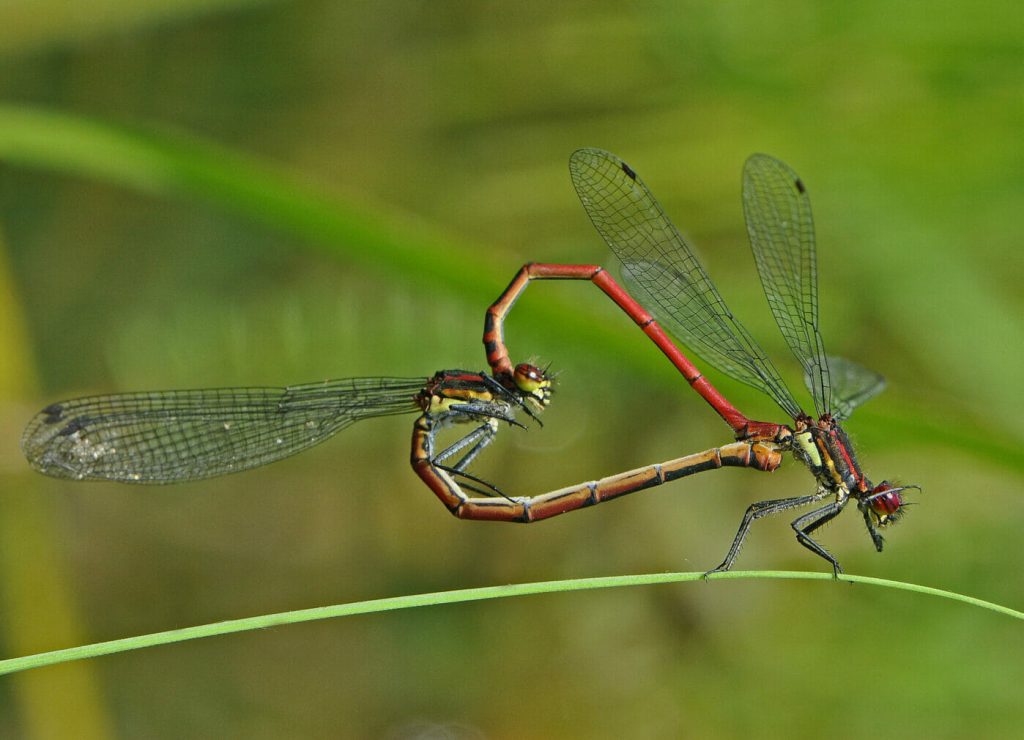
Hold on, there is more. Since a female dragonfly will mate with multiple partners and only the last sexual partner will actually fertilize her eggs, the male dragonfly will scoop out the sperm of pervious mating partners using barbs on their penises. Once he has cleaned house (so to speak), the male dragonfly will position his sperm to maximize fertilization potential. Then he will stand guard and chase away any other males that attempt to mate with his partner.
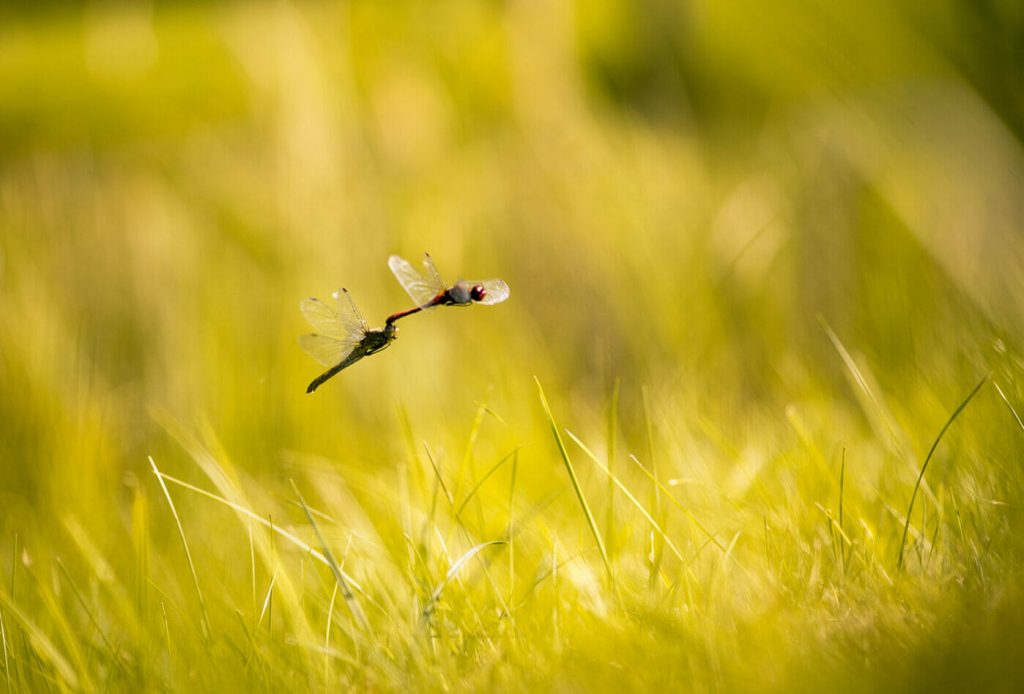
When it comes to avoiding sexually aggressive males, some female dragonflies play dead. Others, according to a new study, wrestle the males away in midair.
The work concerns blue-eyed darners (Rhionaeschna multicolor), a colorful dragonfly found widely across North America. When males of this species want to mate, they try to seize the female’s head with a special anal appendage. If she consents, the female folds her long abdomen back toward him and the pair flies together in a heart-shaped wheel formation.
But if she isn’t in the mood, the female starts to tussle, researchers report in Ecology. She shakes her head to try to free it from the male, while twisting around to stop him from putting his sex organs next to hers. She’ll even fly backward to confound his efforts. Sometimes, the female will hold tight onto something like a reed to avoid the mating flight altogether, as can be seen in the video above.
If none of this works, the female dragonfly will sabotage the flight, dive-bombing into the water to shake off and momentarily stall the male, who needs several seconds to take off again from the surface.
Competition Among Male Dragonflies
If given the opportunity, a female dragonfly might mate with multiple partners, but the sperm from her final sexual partner will fertilize her eggs, in most cases. Male dragonflies, therefore, have an incentive to make sure their sperm is the last to be deposited in her.
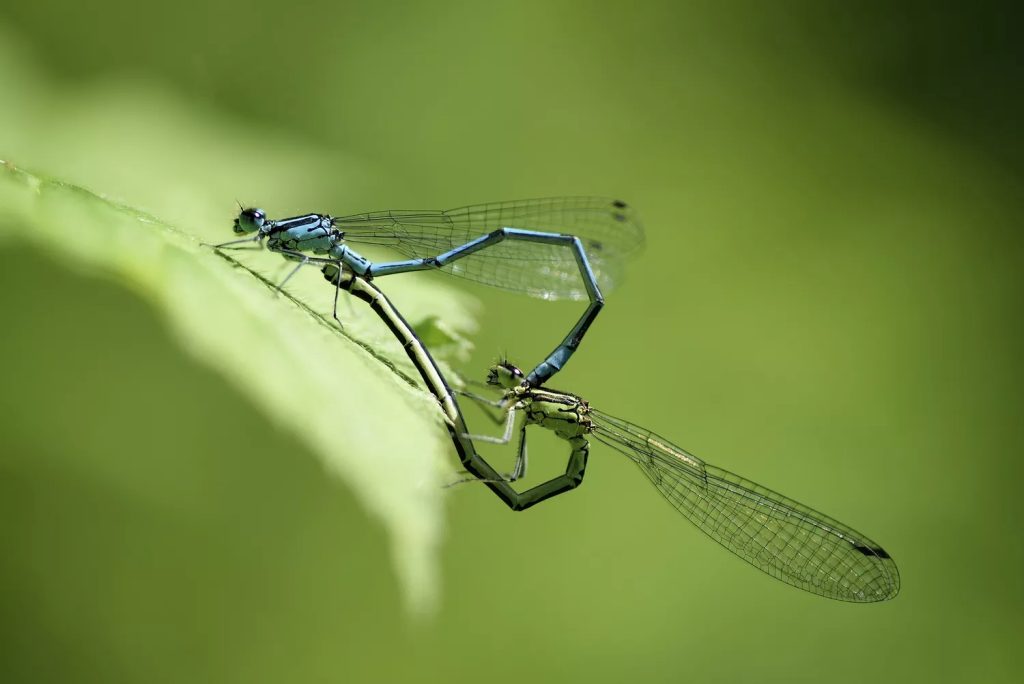
A male dragonfly can increase his chances of fatherhood by destroying the sperm of his competitors, and he’s well equipped to do so when he mates. Some dragonflies have backward-facing hooks or barbs on their penises, which they can use to scoop out any sperm they find inside their partner before depositing their own. Other dragonflies use their penises to tamp down or move the offending sperm, pushing it aside before he places his own in the ideal location for fertilization. Still, other dragonfly males will dilute any existing sperm they find. In all cases, his goal is to ensure that his sperm supersedes that of any prior partners she has had.
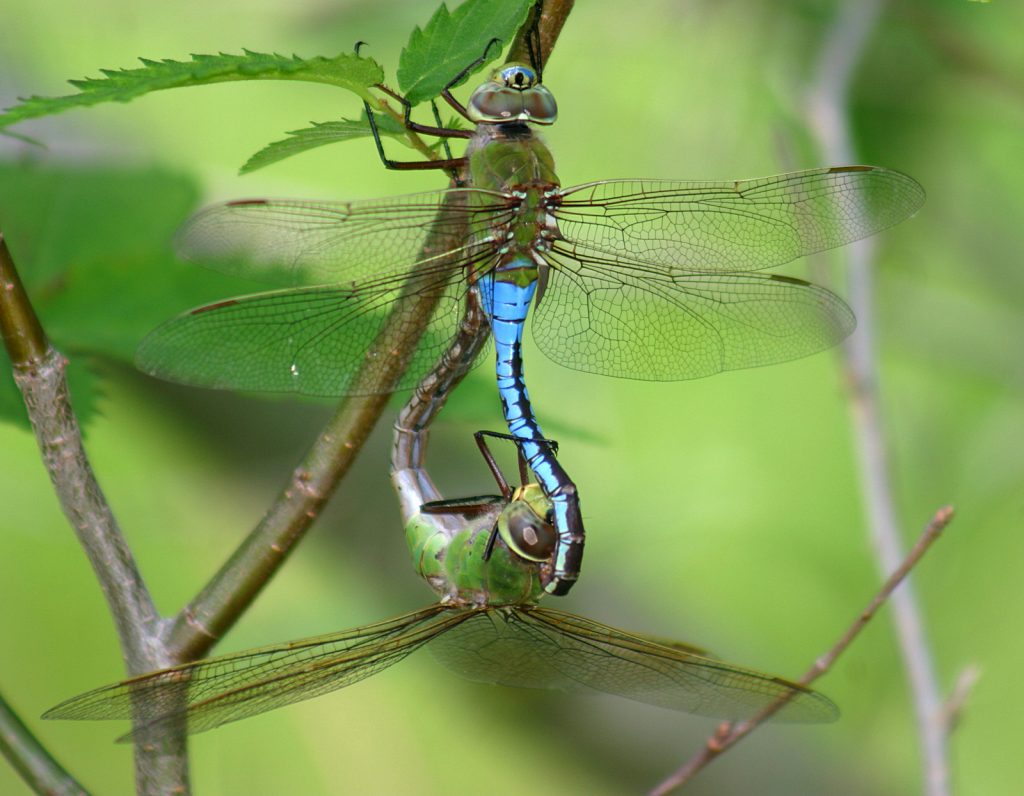
Just to provide an added measure of security for his sperm, the male dragonfly will often guard the female until she oviposits her eggs. He tries to prevent her from mating with any other males, so his sperm is assured the “last in” position that will make him a father. Male damselflies will often continue to grasp their partners with their cerci, refusing to let go until she oviposits. He’ll even endure a dunking in the pond if she submerges to place her eggs. Many dragonflies prefer to guard their partners by simply chasing off any approaching males, even engaging in wing-to-wing combat if necessary.
Fathead minnows, grass carp, goldfish and koi churn the surface, turtles bask on logs, and dragonflies clatter by in slow flight. Solo dragonflies hunt for insects, but pairs fly or perch while engaged in two different, curious positions.
When compared to monkeys and apes and humans, dragonflies are ancient. The earliest common ancestor to primates lived 85 million years ago, but fossils of dragonflies were deposited 325 million years ago. Ancient dragonflies called “griffinflies” were enormous — their bodies were 17 inches long and their wingspans were 28 inches.
Among modern dragonflies, wingspan varies from 2/3 inch to 7 inches among the 3,000 extant species. If you are interested in identifying our local species, I highly recommend Ann Cooper’s photographic guide Dragonflies of the Colorado Front Range, published by the Boulder County Nature Association.

